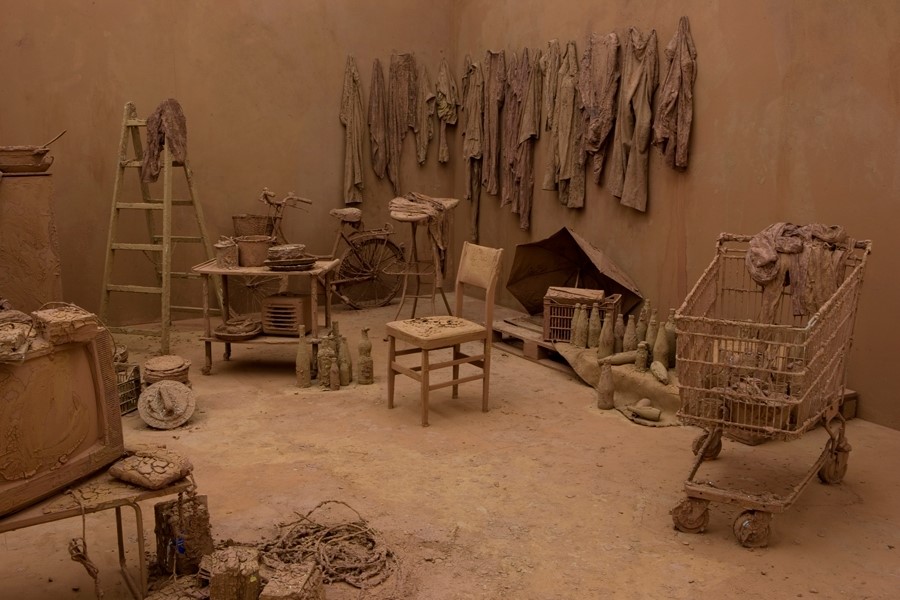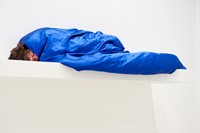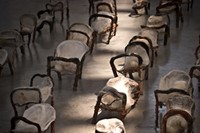Art Of Change: New Directions from China is one of the first exhibitions of its kind in the UK. Featuring works by eight artists and artist groups from China, this groundbreaking show...
Art Of Change: New Directions from China is one of the first exhibitions of its kind in the UK. Featuring works by eight artists and artist groups from China, this groundbreaking show explores installation and performance art created between the 1980s and today, including recent creations and new commissions. Incorporating dynamic, live performances, and transient installations that are designed to change, morph or decompose throughout the course of the exhibition, these works reflect the intrinsic belief of Eastern philosophy that everything is subject to change.
Here, AnOther speaks to the exhibition curator, and Chief Curator of The Hayward Gallery, Stephanie Rosenthal about freedom of expression, and the challenges raised by working with ephemeral artworks.
How did this exhibition come about, and why do you think it's taken so long for an exhibition such as this to be held in the UK?
In general I’m very interested in art forms which embrace the process, and which work against the idea of the final product. What I found so interesting was that whilst in the West we are always working against the idea of the original artwork, in the East the copy is something that can often be more valuable than the original. Performance is very often the starting point for change, in particular social change, and I found this especially interesting against the backdrop of a government such as that of the Chinese, where performance has not been supported as an artform until relatively recently. People are perhaps only recognizing this aspect of Chinese art now because it’s may be harder to grasp than more traditional art forms.
Much has been said about this show in relation to the ‘China/Avant Garde’ exhibition that took place in Beijing in 1989, which was famously closed down after a provocative performance piece. Has the aftermath of the closing of this exhibition affected the way in which artists create performance or installation pieces, and how has it shaped the works in this exhibition?
The closing of the ‘China/Avant Garde’ exhibition crystallized the moment when artists in China realised that they could work differently, and free themselves up to explore different media. Certainly when I visited China to do research for this show, it was one of the main exhibitions that was continually referenced by the artists I was speaking to.
It seems like many of these pieces raise the question 'what is art'. Do you think this is particularly important to the artists, and to the exhibition as a whole?
Not so much the question of what is art, but many of these artists are trying to cross boundaries and enlarge what they can do, especially when you consider that China doesn't have the same long-standing history of performance as we do. Taking for example the piece March 6 by Xu Zhen that's happening today, where visitors are followed by performers wearing pyjamas as they walk around the gallery, for these artists I think it’s different because again they are coming from a tradition where copying is acceptable, and in turn, they are exploring this tradition. Performances are great because they make a statement but they can come and go.
But then there is also this interesting juxtaposition that you’ve created between the ephemeral artworks in the exhibition and the interactive archive that you’ve built to complement it - is it important to you that these transient works are documented and preserved?
I’m particularly interested in works that do alter constantly, I think it’s essential that these works are not deemed to be less important in art history, or even worse, not remembered at all. Archives such as this are a great way of making us aware of the importance of the works, without necessarily having to recreate them, so really they are often the backbone of our exhibitions. However it’s also important to us that these archives are fun, and we always hope that they inspire the public to want to know more.
Is there a specific work that you think particularly sums up the ethos of the show?
When I went to China I felt there was a real contrast between the new and the ancient, and I think that the arts collective MadeIn Company really do embrace both of these aspects, however I also think Liang Shaoji’s installation, which showcases the existence of the silkworm, really encompasses the cycle of life and the tradition of the silk worm. But really the idea in this exhibition was that we show a balanced and comprehensive viewpoint, which includes all the artists’ work.
Art Of Change: New Directions from China is at the Hayward Gallery until December 9 2012.
Text by Siobhan Andrews



